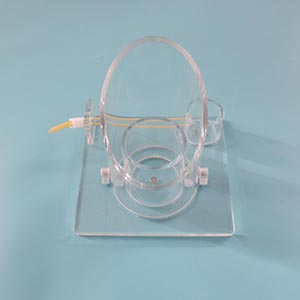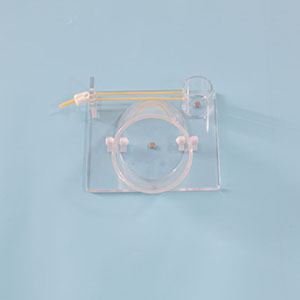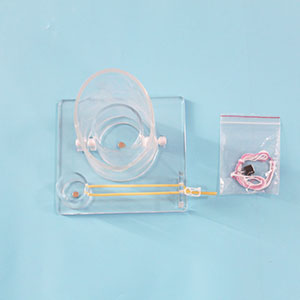Welcome to visitShanghai Chinon medical Model & Equipment Manufacturing Co., LTD
Surgical knotting is a vital skill in surgery, requiring a high degree of precision and proficiency. The transition from theoretical knowledge to practical operation is often a challenge for medical students. The knotting skills training model helps students overcome this problem quickly by simulating the actual operating environment.
The bridge between theory and practice
The surgical knotting skills training model provides a realistic practice platform for participants to practice and apply the theoretical knowledge they have learned in the classroom in a risk-free environment. These models simulate the structure of human tissue and common situations in surgery, allowing students to actually "feel" the complexity of the knot-tying operation. Through repeated practice, students are able to combine the theory in the book with the actual needs in surgical operations, promoting the internalization of theoretical knowledge.

Surgical knotting Skills Training model
Improve operational proficiency and confidence
Surgical knotting skills training model not only allows students to understand how to perform surgical knotting, but also effectively improves their operational proficiency. Studies have shown that trainees trained with models perform more accurately in real surgery, reducing the risk of inproficiency. For example, one study showed that the accuracy and speed of the knotting technique significantly improved after participants performed simulation training, and the error rate of clinical operations was also reduced.
Data support
According to a number of medical education studies, simulation training helps students master complex skills better than the traditional "watch and perform" model. A study of surgical knotting skills training showed that participants who received simulated training performed better in surgical knotting skills than those who were taught in the traditional way, especially in operational fluency and handling complex situations. These data strongly suggest that the surgical knotting skills training model plays a key role in helping trainees transition from theory to practice.

Clinical significance
In surgery, knotting techniques directly affect the success rate of surgery and the prognosis of patients. Through the training model, students are able to practice repeatedly without actual risk and gradually accumulate experience. In this way, students will not only be able to understand the theoretical knowledge of knot tying, but also learn how to deal with different clinical challenges in the simulation, thus reducing possible errors in practical operation.

Sum up
The knotting skills training model provides an ideal practice platform to help students combine theory and practice closely by simulating the real surgical environment. The results of the data-supported study prove that this training model can effectively improve the trainees' operational skills and significantly improve their clinical resilience.
|
NEXTпјљCan the application of pelvic model in clinical training accelerate the learning process?
LASTпјљHow to help acupuncture practitioners better understand meridians and acupoints? |
Return list |